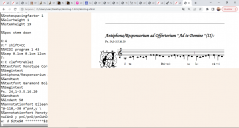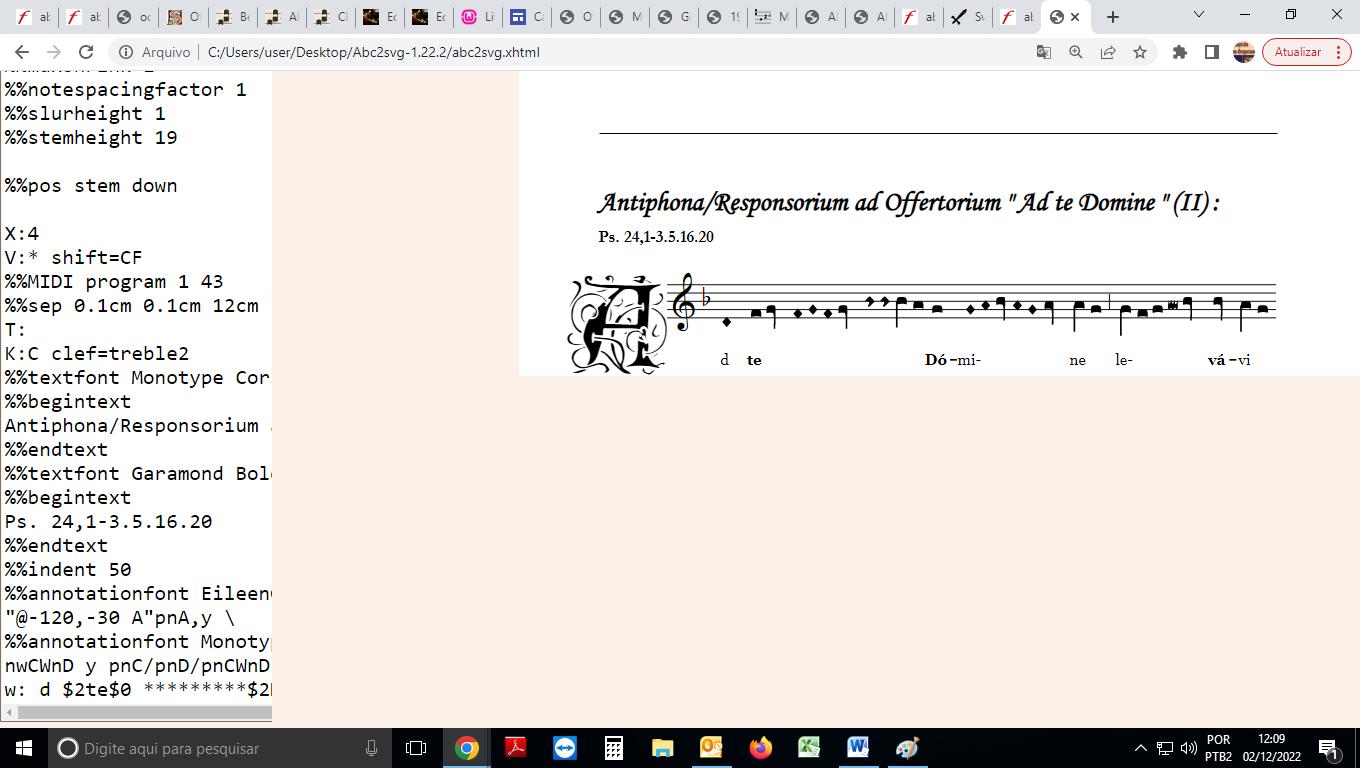Chant notation on Abc2svg - abcnotation - simple modern, square on modern and similar to Lagall
-
For those unfamiliar with "abc notation" and abc2svg, see:
https://en.wikipedia.org/wiki/ABC_notation
https://abcnotation.com/wiki/abc:standard:v2.1
"Making Music with Abc 2" - https://abcplus.sourceforge.net/abcplus_en.html
http://moinejf.free.fr/abcm2ps-doc/features.html
http://moinejf.free.fr/abcm2ps-doc/index.html
http://moinejf.free.fr/js/edit-1.xhtml
I was experimenting with some possibilities of the ab2svg editor and when seeing a type of notation with different "note heads" (depending on which musical note it is, the notation changes the shape of the head) I glimpsed the possibility of putting figures for Gregorian chant.
With the %%beginsvg/%%endsvg function and the %%deco function it is possible to specify some special things. So I created an svg path for quilisma and for oriscus using https://yqnn.github.io/svg-path-editor/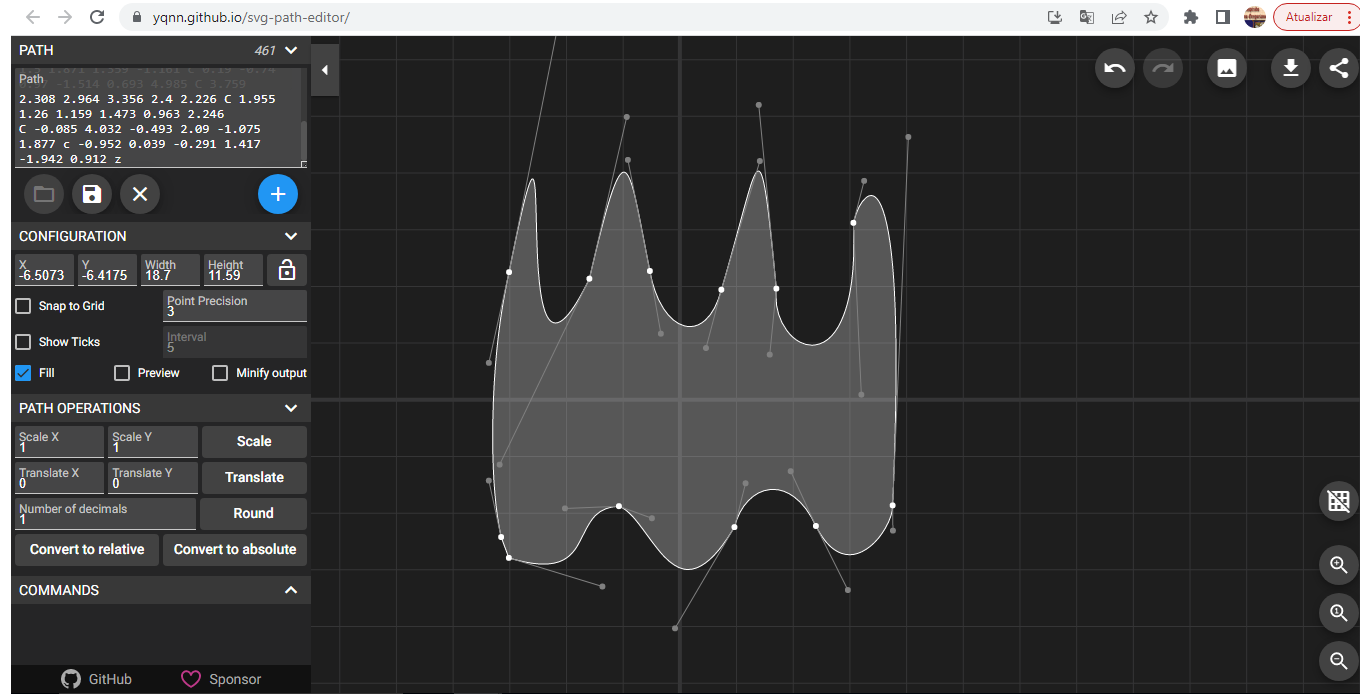
and then I created the following code to use in the abc2svg editor:
__________________________________________________________
%% quilisma and oriscus %%
%%beginsvg
-0.217 -3.072 0.14 -4.673 C -2.016 -7.282 -3.179 1.144 -1.596 -2.136
c 0.659 -2.853 0.679 -2.096 1.067 -0.136 C -0.335 -1.166 0.461 -0.913
0.732 -1.942 C 1.411 -4.212 1.392 -5.202 1.702 -1.961 c -0.116 1.164
1.5 1.871 1.359 -1.161 c 0.19 -0.74 0.97 -1.514 0.693 4.985 C 3.759
2.308 2.964 3.356 2.4 2.226 C 1.955 1.26 1.159 1.473 0.963 2.246
C -0.085 4.032 -0.493 2.09 -1.075 1.877 c -0.952 0.039 -0.291 1.417
-1.942 0.912 z"/>
-0.217 -3.072 -0.157 -3.911 C -3.416 -2.936 -2.106 -3.326 -1.788
-3.255 C -1.045 -3.609 2.868 0.752 3.026 -3.469 c 0.009 -0.569 0.32
-0.435 0.617 0.173 c 0.326 0.638 0.203 1.947 0.163 2.779 C 3.738
2.351 3.129 2.561 2.062 2.561 C 0.92 2.637 -0.139 1.276 -1.435 1.028
c -1.048 0.083 -0.441 1.241 -1.213 1.875 z"/>
.sW {stroke-width:0.9}
.bW {stroke-width:0.9}
%%endsvg
%%deco head-quilisma 0 quilisma 0 0 0
U:q=!head-quilisma!
%%deco head-oriscus 0 oriscus 0 0 0
U:o=!head-oriscus!
U:i=!wedge!
U:n=!stemless!
%%notespacingfactor 1
%%scale 0.9
-------------------------------------------------------------
With this code it is possible create things like this : (the melody is random,
I just wanted to demonstrate the possibilities of the notation)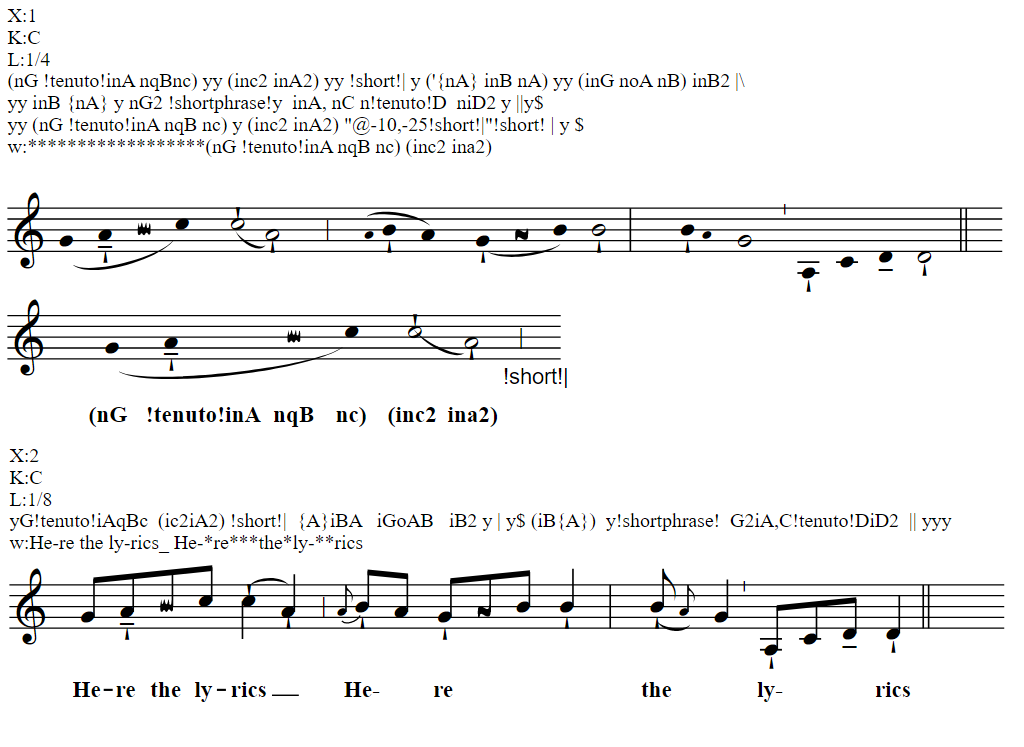

 quilisma-svg.png1360 x 694 - 103K
quilisma-svg.png1360 x 694 - 103K
 quilisma-svg2.png1024 x 747 - 68K
quilisma-svg2.png1024 x 747 - 68K -
Then I also created a set with simple one-note neumes with a one-key shortcut for each one.
With this another code it is possible do this: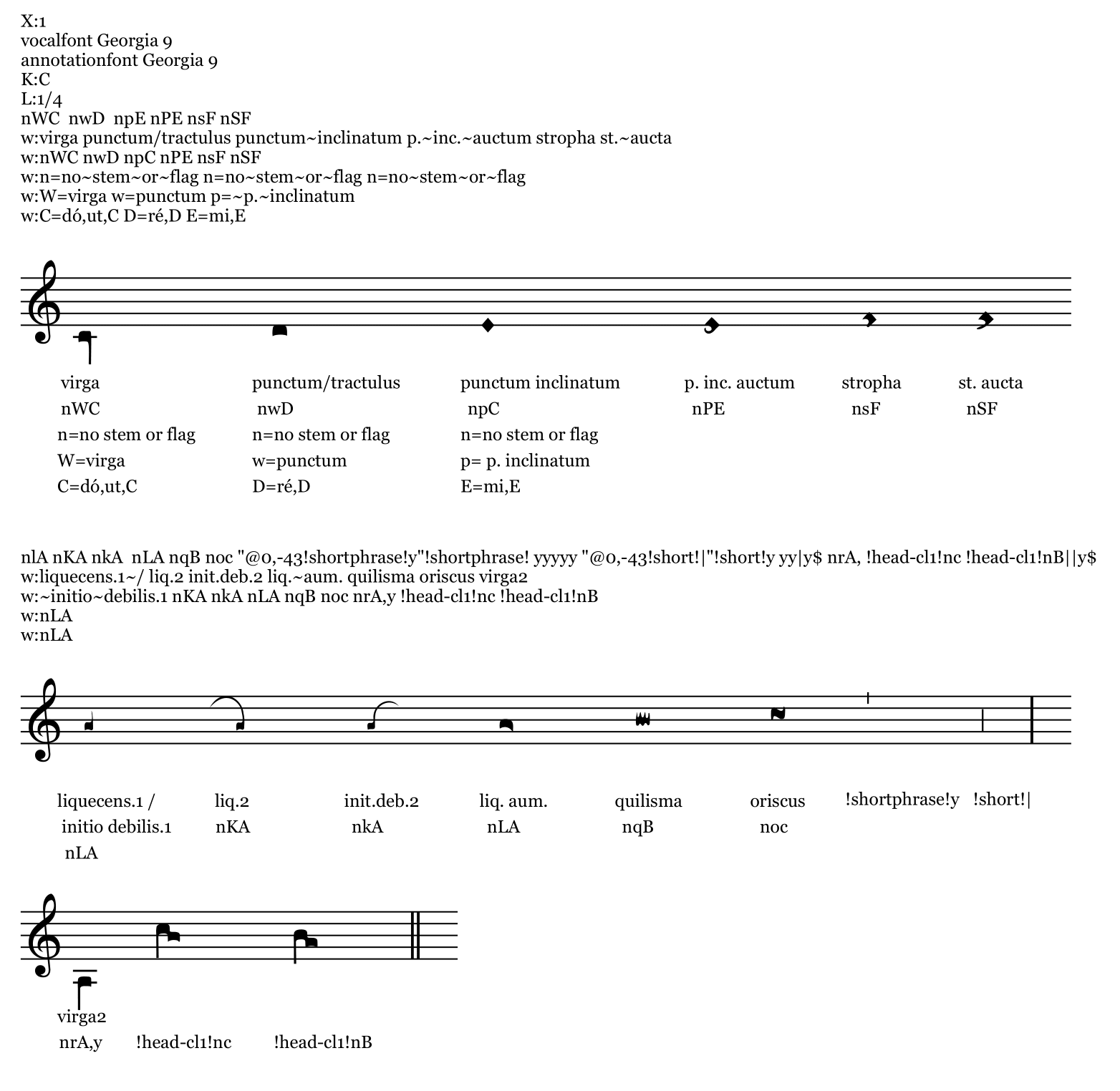
and this: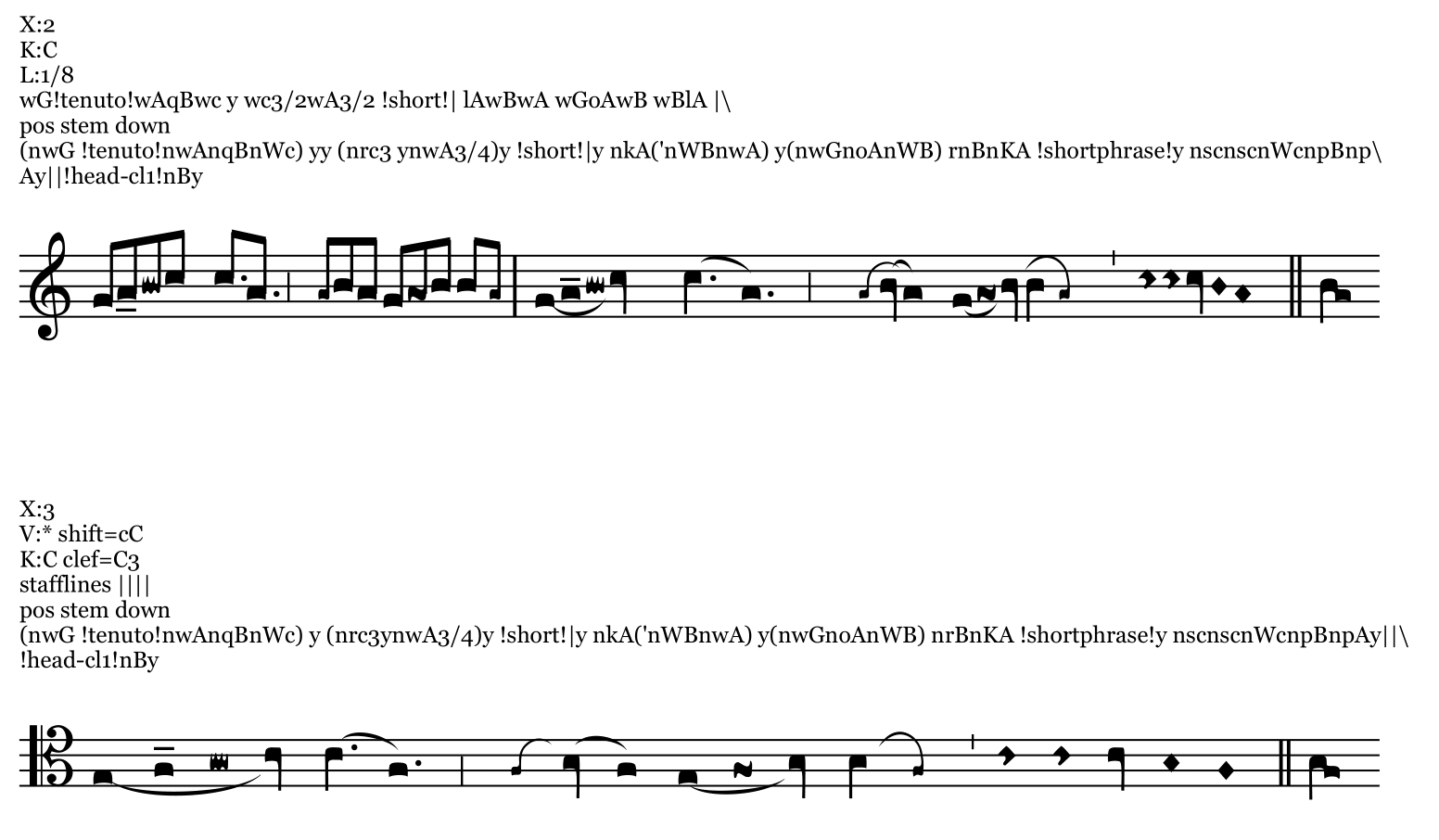

 modern-square1.png1564 x 1524 - 164K
modern-square1.png1564 x 1524 - 164K
 modern-square-abc2svg.pdf141K
modern-square-abc2svg.pdf141K
 modern-square2.png1552 x 906 - 103K
modern-square2.png1552 x 906 - 103K -
There are few options for shortcuts (many of the letters are used in the standard abc code) so to make all variations of complex neumes with ligatures (neumes of two, three and four notes or more) it would be necessary to use the
%%deco function without shortcuts :
!head-"name you want to give for the special symbol in svg"!.
As an example of this, I made the clivis with a second interval: !head-cl1!
-
In addition to these two codes (the simplest only with oriscus and quilisma and the most elaborate with several types of simple neume) I also made one code with three sizes of tractulus, four sizes of virga, three sizes of oriscus and with a different design in augmentative liquescence and quilisma.
So it is possible to note with this complex code in a notation similar to lagall (http://www.gregoriana.nl/0216lagal.htm ).
I made it with the purpose of elaborating a notation for a choir with people who don't read modern notation, to interpret my transcriptions according to a mensuralist interpretation of the chant (that's why, in the three sizes I made, it is more or less proportional with approximately twice and triple the size).
It would be possible to use this system for a semiological notation of nuances or it would be possible to change the svg path with the proportions you want to adjust to your practice of nuances (thus having a performance music score).
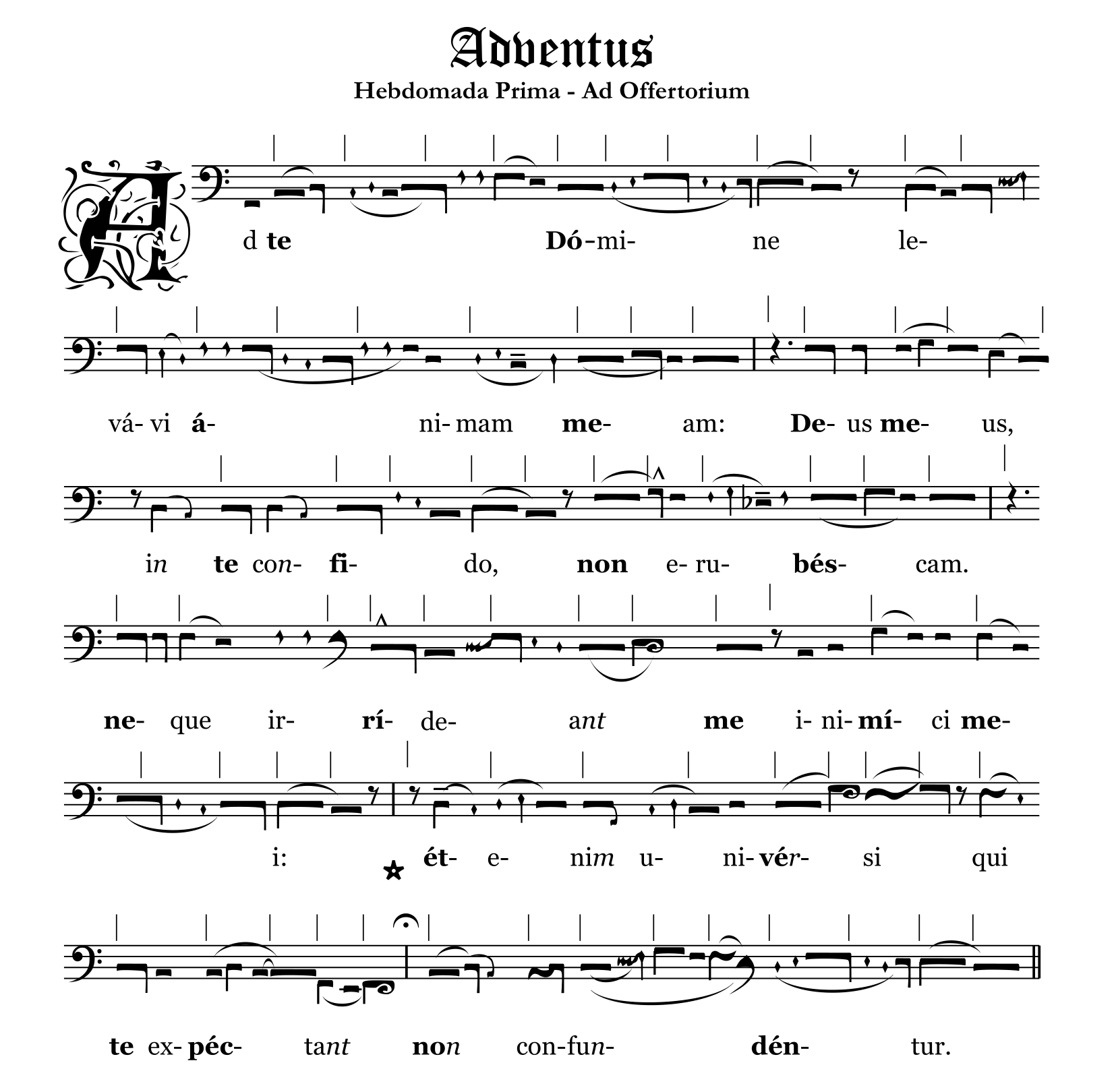

 abc2svg_nuanced_mensured_chant.pdf484K
abc2svg_nuanced_mensured_chant.pdf484K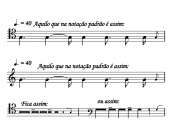
 abc2svg_nuanced_mensured_chant-1.png1652 x 1172 - 100K
abc2svg_nuanced_mensured_chant-1.png1652 x 1172 - 100K
 abc2svg_nuanced_mensured_chant-2.png1652 x 1620 - 202K
abc2svg_nuanced_mensured_chant-2.png1652 x 1620 - 202K -
Maybe I'll make a version similar to the last one but with a design inspired by Laon notation and adding stylized letters "m" "T" and "a" (for "tenete" and "auge") but that's not really very necessary because you can use a cool Carolingian font in %%annotationfont that already solves it.
-
Speaking of fonts, what is the font name of that fantastic drop cap? I love it, and I've never seen that one before, and I've searched multiple times for different drop cap fonts.Thanked by 1Lincoln_Hein
-
By the way, if you are just wanting to do modern stemless transcriptions perhaps with a squiggle note here and there, this is easily achievable in Dorico, fwiw. Dorico has support for true open meter music, and there is a notehead editor, where you can define some alternate glyphs, and then you can assign those noteheads at will. Very slick and doesn’t require coding savvy, as GABC does.Thanked by 1Lincoln_Hein
-
The drop cap font is Eileen caps Black:
https://tug.org/FontCatalogue/eileencapsblack/
https://www.wfonts.com/font/eileen-caps
https://www.dafont.com/eileen-caps.font
Welcome to the MusicaSacra Forum!
To participate in the discussions on Catholic church music, sign in or register as a forum member, The forum is a project of the Church Music Association of America.
Categories
- All Discussions21,074
- General Music Discussion8,206
- Job Openings193
- Management of Music Programs850
- Choral Matters532
- Church Documents and Rubrics524
- CMAA Notes300
- Events713
- For Newcomers: Read First26
- Sacred Polyphony546
- Hymnody871
- Gregorian Chant: General2,694
- ↳ Graduale Romanum and Liber Usualis367
- ↳ Graduale Simplex60
- ↳ Semiology63
- Vernacular Plainsong696
- Anglican Use and Anglican Chant68
- Organ, Other Instruments and Repertoire434
- New Composition/Works in Progress1,288
- Recordings230
- Music for Hispanic Ministry159
- Music Education: Children211
- Music Education: General222
- News Items245
- Positions Wanted2
- General Discussion: Catholicism738
- Amusements176
- General Discussion1,033
- Opinions117


